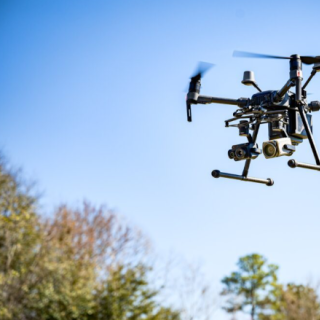History has been made in our lifetime. When President Obama came to office in 2009, he had a progressive agenda that included implementing a national high speed rail plan. Many of his platforms became unsuccessful bargaining chips and the high speed rail plan was hardly popular on both sides of the isle. Three Republican governors effectively halted the plan by rescinding astronomical amounts of money that would have improved high speed travel in their respective states. People from Wisconsin, Florida and, of course, Ohio have lost opportunities to move around their states without disrupting the climate on the road or frequently paying more for airfare. Ohio is vying for high-speed rail yet again though.
Columbus is situated in a central position relative to cities in Ohio and across state lines. The third largest city in the country, Chicago, is only 350 miles away. While in the air, these cities seem worlds away, and their communities become completely disconnected. And although the road can be exhilarating- and other times exhausting- an identified high speed rail line could get passengers to their destination in only three and a half hours. By increasing connectivity to Chicago, I believe Columbus can use the train as an opportunity to continue its growth and expand its industries.
The State of Rail
Barack Obama's high speed rail plan is still available through the Federal Railway Association's website. Even more interesting is a quote from Obama on the site's homepage: he speaks romantically of connecting the country by building new rail corridors and improving existing ones.
Had the 3-C Rail project been completed, Cleveland, Columbus and Cincinnati, would have been connected by a slower version of HSR, funded almost entirely by the Federal government. Funds went through to improve train service in Michigan and California. Entertainingly enough, the money spent on improving train service in Michigan went to Amtrak's Wolverine line that runs between Detroit and Chicago. The Wolverine line is a high-speed corridor that connects the Windy City to the Motor city. It is designated a HSC because trains reach 110mph for half of the trip between Chicago and Detroit.
Still Without Rail
Often we are reminded that Columbus is the largest city without passenger rail. Since Mayor Michael Coleman has come to office, he has initiated and supported rail projects throughout the Columbus Metropolitan area. After a decade in office, the capital city remains without rail. Recently, our city administration has begun considering rail again.
I discussed the HSR project with the Mayor Coleman's Director of Regional Initiatives, Steve Campbell, and our conversation revolved around a central theme of how the benefits from the project will cross jurisdictions outside of Columbus. Cities along the route, such as Lima and Marysville can benefit tremendously. Lima Mayor David Berger realized this and helped allocate money for the initial feasibility study.
If completed, Lima and Marysville will have an increased ability to tap into world-class medical and academic institutions that operate in Columbus. Here, job centers are much more plentiful outside of the manufacturing industries. Some of those industries include finance, insurance and research and development. Entertainment abounds in the Capital city as well. Can Columbus benefit from Chicago in similar ways though?
Evidence abounds that Columbus is ready to access new Midwestern and international markets, which can be done by increasing face-to-face interactions with train-traveling business people. Venture capitalists could reach Columbus using a more affordable mode. With hotel capacity increasing near the convention center, high-speed rail would make the venue even more attractive.
Opponents of the rail line have suggested building a new highway for car and truck traffic, but there are already available highway routes from Ohio through Indiana and on to Illinois. The HSR route has been deemed financially sustainable, feasible, and in this regard, building a new highway is out of the question. Revenues collected from the gas tax are unable to cover maintenance costs of our existing roads and bridges, let alone finance new construction. According to the Federal Highway Administration, new highway construction in urban areas ranges between $12 million and $15 million per road mile. It is entirely unsound then to build even a mile of highway considering only $60,000 a year in gas taxes are generated per road mile. Central Ohio has one and a half million people who can access viable, quick transportation to Chicago and to other cities along the high-speed route.
As mentioned before, a feasibility study, initiated by the Northeast Indiana Passenger Rail Association, was completed and had results that reinforce the project's strength. Fort Wayne, Indiana, Columbus, Lima and other cities and organizations helped fund a study that determined within three years, the route can be financially sustainable. Another study is required, the Environmental Impact Study, which will allow the corridor to be funded up to 80 percent by the Federal Railway Administration, which funds new and upgraded tracks, bridges and other physical rail infrastructure. An excellent video made by a Columbus news station, WBNS, shows a short interview with a member of NIPRA discussing the benefits of the train.
“ The project is solid,” Steve Campbell said as he shared exciting details on a recent conversation between the Ohio Department of Transportation about bringing HSR to Columbus. He told me his department presented its business case and briefed ODOT on the project's details. After establishing the costs and benefits with ODOT, it would be hard for the entity to justify not allocating a portion of its almost $3 billion annual transportation budget.
Where Are We Now?
The fact remains that Columbus is still without rail. Transit Columbus is a transportation advocate writing a new chapter for our great city. I spoke with board member, Josh Lapp, and staff member, Seth Josolowitz about some of their recent work.
An accomplished member in the planning community, Lapp conveyed a seamless understanding of the project's benefits to me. He broke down a realistic time line for bringing passenger rail here too.
“We are in this for the long term,” he said of HSR. “The 670/70/71 interstate project has taken years and has years to go.” He also felt that the state has adequate resources to pay for its portion of the project, and said that a realistic target is to have trains running by 2020.
Lapp organized a Transit Columbus, event, “Design Your Transit,” and I truly feel that the organization is applying creative strategies to generate solutions for our city- one that is still without rail. TC will be hosting a series of events called “Good Ideas” in early 2014, so be sure to check out their website, TransitColumbus.org, or follow them on Facebook and twitter.
I also feel the project could be realistically completed by 2020. Ohio's political climate has never fully supported transportation modes outside the automobile, and the state government does not seem poised to make any sudden shifts in ideology. The car reigns supreme in this state, and short of succession, Columbus will have to make the shift, forcing the shovels into the ground.
Through a Change.org petition, over 5,000 people have already spoke on the matter giving a resounding answer: Columbus needs HSR to Chicago. Josolowitz is behind that petition that has garnered attention from Columbus government and MORPC. In our conversation, Josolowitz told me of how Transit Columbus is involved with many aspects of the rail project. ODOT is putting together a steering committee that will consider alternative-transportation projects, and TC will be sending a board member to further persuade our ODOT on the potential success of the corridor.
In a perfect world, Josolowitz felt the train could provide service by 2020. He spoke of the matter saying that realistically, “Our current governor does not support rail projects in this state.” So, he felt that the train would not be completed until 2024, a full ten years from now, or possibly even later. Readers can make their voices heard by signing the petition at Change.org.
Where Do We Go from Here?
A question many people on the ground floor of this project are asking themselves is, “Where do we go from here?” There is still no organization within Ohio's borders, governmental or non-governmental, that is taking the lead role in bringing anything into fruition. The governor of Indiana, Indiana's Department of Transportation, and of course, NIPRA have either committed funds or said that they would financially support the project at the development stage. Ohio and Indiana have the most to gain from the project, but officials here are silent on the matter while Indiana representation has spoken.
So, where do we go from here? Well, I have gone to where organizations such as Transit Columbus are holding events. I ventured to the doorsteps of open-minded administrations such as the one we have in Columbus, but getting in touch with your Ohio representative and Ohio senator can make a world of difference too. Last of all, support this project by simply signing the Change.org petition.
Without pressure, Columbus will be without rail for the next ten or more years. As a united constituency though, we can demand the attention of our elected officials and take hold of our tax dollars so that we are riding a damn fast train to Chicago in no time.



